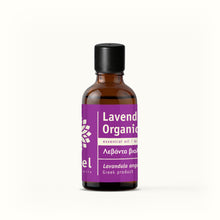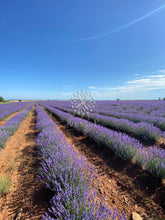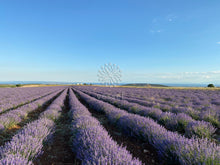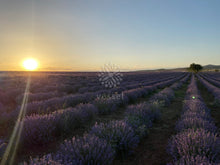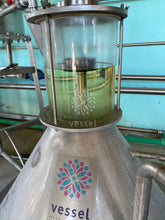Greek Lavender Organic Essential Oil
Regular price
€8.90
Sale
If you are interested in buying larger size quantities visit www.vessel.gr or we would love to receive your email at info@vessel.gr
Greek Organic Lavender Essential Oil
Batch: E1001790




Margaret Karlinski comments for our Greek Organic Lavender Essential Oil
"Over the last 20 years - as a teacher and aromatherapy practitioner - I have used countless bottles of lavender essential oil from all over the world. From France, UK, Bulgaria, India and Japan - I smelled them all and i did not think I could ever be surprised by it. And then a bottle of Vessel's Organic Lavender landed in my hands and it blew me away. The beautiful balance of chemical compounds results in a truly unique, spectacular aroma. I cannot imagine using anything else! This is now my number one choice, I still get excited every time I reach for the bottle. Thank you Vasilis Varsamis, thank you Vessel!" - Margaret Karlinski
Common name: Organic Lavender
Latin name: Lavandula angustifolia cv. Hemus and Lavandula angustifolia cv. Sevtopolis
Botanical family: Lamiaceae / Labiate
Method of extraction: distilled at our organically certified distillery
Plant part used to extract the oil: flowering tops
Cultivation method: organic farming
Area of origin: our organic Greek lavender is grown at nea Tenedos village located in the Northern Greece. The village Nea Tenedos counts 368 inhabitants engaged in agriculture and stockbreeding. It is a very beautiful and quiet semi-mountainous village at a close distance from the sea.
Historical notes:
As a herb, lavender has been in a documented use for over 2,500 years. It is believed that after being first domesticated by Arabs it spread to Greece and then, around 600 BC, to Europe. It is thought that it may have come from Greek Hyeres Islands into France and later to Spain, Italy and England.
Around 50 - 70 AD, Greek military physician Pedanius Dioscorides penned what appears to be the first written record of the medicinal uses of lavender. He collected medicinal plants from around the Mediterranean and described them and their medicinal uses in a 5-volume work entitled ‘De Materia Medica’. Lavender, he noted, when taken internally relieved indigestion, headaches and sore throats and externally, could be used to clean wounds and burns or treat skin ailments.
Pliny the Elder (23 – 79AD), a Greek writer and encyclopaedist, noted the benefits of herbal preparations with lavender including helping those with menstrual problems, upset stomachs, kidney disorders, jaundice and treating insect bites.
Biochemical group: monoterpenols/esters
Main chemical constituents: linalool and linalyl acetate
Colour: clear
Consistency: thin
Aroma strength: middle
Perfumery note: top/middle
Aroma: a perfect balance between linalool and linalyl acetate and a very low levels of 1,8-cineole and camphor result in a truly unique aroma - delightfully sweet, floral, fresh and sparkling, with a fruity hint and no harsh camphoraceous or eucalyptus-like undertones. Simply beautiful! :)
Traditional Aromatherapy Uses:
- Traditionally in aromatherapy treatments lavender is associated with the following therapeutic properties: analgesic, antianxiety, antibacterial, anticonvulsant, antidepressant, antiinflammatory, antimicrobial, antirheumatic, antiseptic, antispasmodic, antiviral, calming, carminative, cicatrisant, CNS depressant, decongestant, deodorant, hypotensive, immunostimmulant, nervine, sedative, vulnerary
- Qualified aromatherapists may use lavender essential oil for common complaints such as:
- skin conditions: burns, sunburn, bites, stings and grazes as well as boils, eczema, acne and in general skin care for all skin types
- nervous tension and stress related conditions like insomnia, depression, migraine to name a few
- respiratory issues - cough, colds, flu, catarrh and in some cases of asthma and bronchitis
- various types of aches and pains, from headaches to rheumatic, muscular and menstrual
- circulatory problems - high blood pressure and palpitations
- others
- How we use it:
- Inhalation / Vapourisation:
- We really enjoy this gorgeous lavender as an evening 'wind me down' aroma, on its own, close to and at bed time. Try to vapourise a couple of drops in your bedroom. It also blends well with our mandarin oil.
- Vapourise for anxiety and stress or to repel insects, too!
- Skin applications:
Please note, some Aromatherapists say that Lavender can be used undiluted. But you never know, so we suggest you dilute it first.
- Sunburn - we have noticed it calms down the redness and soothes when added to an Aloe Vera gel or a light unscented body lotion
- For a soothing face cream - add together with our Helichrysum and/or Sea fennel (Criste Marine) essential oil to an unscented face cream
- It can also prove useful against eczema - try adding to an unscented body lotion or cream and test on a small area first
-For tension and hypertension (high blood pressure) - dilute in a fixed oil (carrier oil) and put in a small roll-on bottle. Spread onto your wrists, behind your ears or temples
- For menstrual pain, to improve digestion or relieve muscular pain - dilute in a fixed oil (carrier oil) and massage the lower abdomen or specific muscle areas.
Please, also see our How to Use Essential Oils Safely page for more information
Safety considerations:
Tisserand and Young do not indicate any special precautions when using Lavender Essential Oil. Reading Tisserand and Young's full profile is recommended. [Robert Tisserand and Rodney Young, 'Essential Oil Safety' (Second Edition. United Kingdom: Churchill Livingstone Elsevier, 2014), 325-328.]
Please, also see our How to Use Essential Oils Safely page for more information.
Research and studies:
- Local anaesthetic activity of the essential oil of Lavandula angustifolia
https://www.ncbi.nlm.nih.gov/pubmed/10630108
- Aromatherapy: evidence for sedative effects of the essential oil of lavender after inhalation
https://www.ncbi.nlm.nih.gov/pubmed/1817516
- A randomized, controlled cross-over trial of dermally-applied lavender (Lavandula angustifolia) oil as a treatment of agitated behaviour in dementia
https://www.ncbi.nlm.nih.gov/pubmed/24219098
Margaret Pawlaczyk-Karlinski MSc. (Hons.), Cert. Ed., M.I.F.A., NHS reg.










